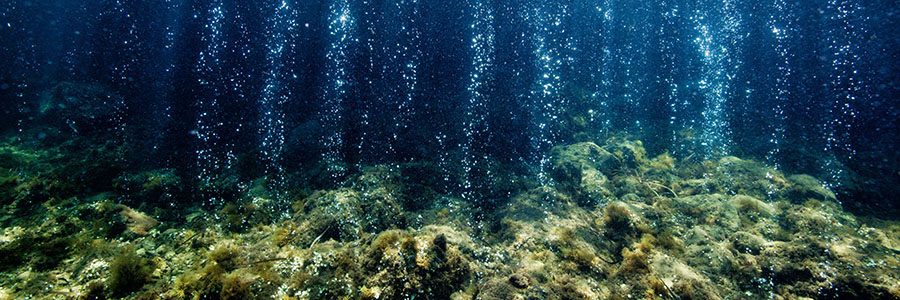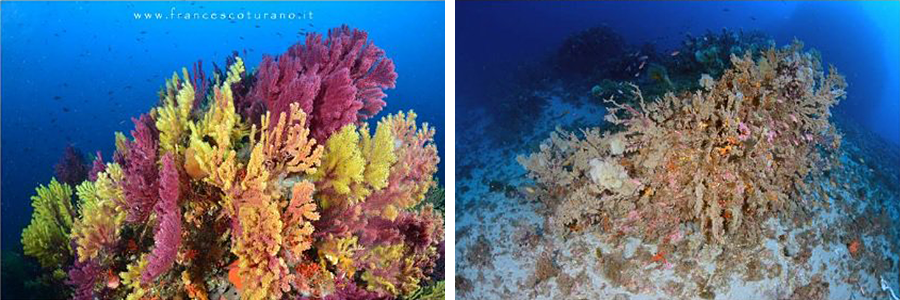Context
4Oceans takes advantage of two “natural laboratories” to study global environmental change effects:
1) natural CO2 vents, which capture the emergent effects of ocean acidification on entire ecosystem structure, function and interactions over long time scales;
2) highly variable seasonal temperatures and extreme ocean warming events, known as marine heatwaves (www.marineheatwaves.org).
Natural CO2 vents

Volcanic CO2 seeps of Ischia (Italy). They release large amounts of bubbles of CO2, which causes a local acidification of the surrounding marine ecosystems. Ocean acidification reflects a decline in the surface ocean pH and a suite of changes in seawater chemistry due to the uptake of excess anthropogenic CO2 by the ocean. The environmental characteristics of water carbonate chemistry and low pH values are used as a proxy to provide insights into acidification scenarios under IPCC Representative Concentration Pathways. These CO2 vents are rare, only 15-20 sites like it are found in the world. They are like a “crystal ball” that shows the future of the world’s oceans in the face of ocean acidification. Locations in the ocean where CO2 naturally seeps from the seafloor can be used as natural laboratories to infer potential responses of marine biodiversity and local adaptation of species to ocean acidification.
Marine heatwaves

During the last decade, marine heatwaves dramatically impacted coralligenous outcrops in the NW Mediterranean, causing abrupt ecological shifts and socioeconomic consequences (read more here: https://t-mednet.org). Marine heatwaves occur when ocean temperatures are extremely warm for an extended period of time. It is remarkable how biodiversity and ecosystem function can be drastically affected by marine heatwaves. These photographs show the same locality before and after a marine heatwave in the Mediterranean Sea, with loss of habitat-forming species such as the gorgonian Paramuricea clavata and its associated community. Such habitat shifts have serious consequences for marine biodiversity, ecosystem functioning, and services.



